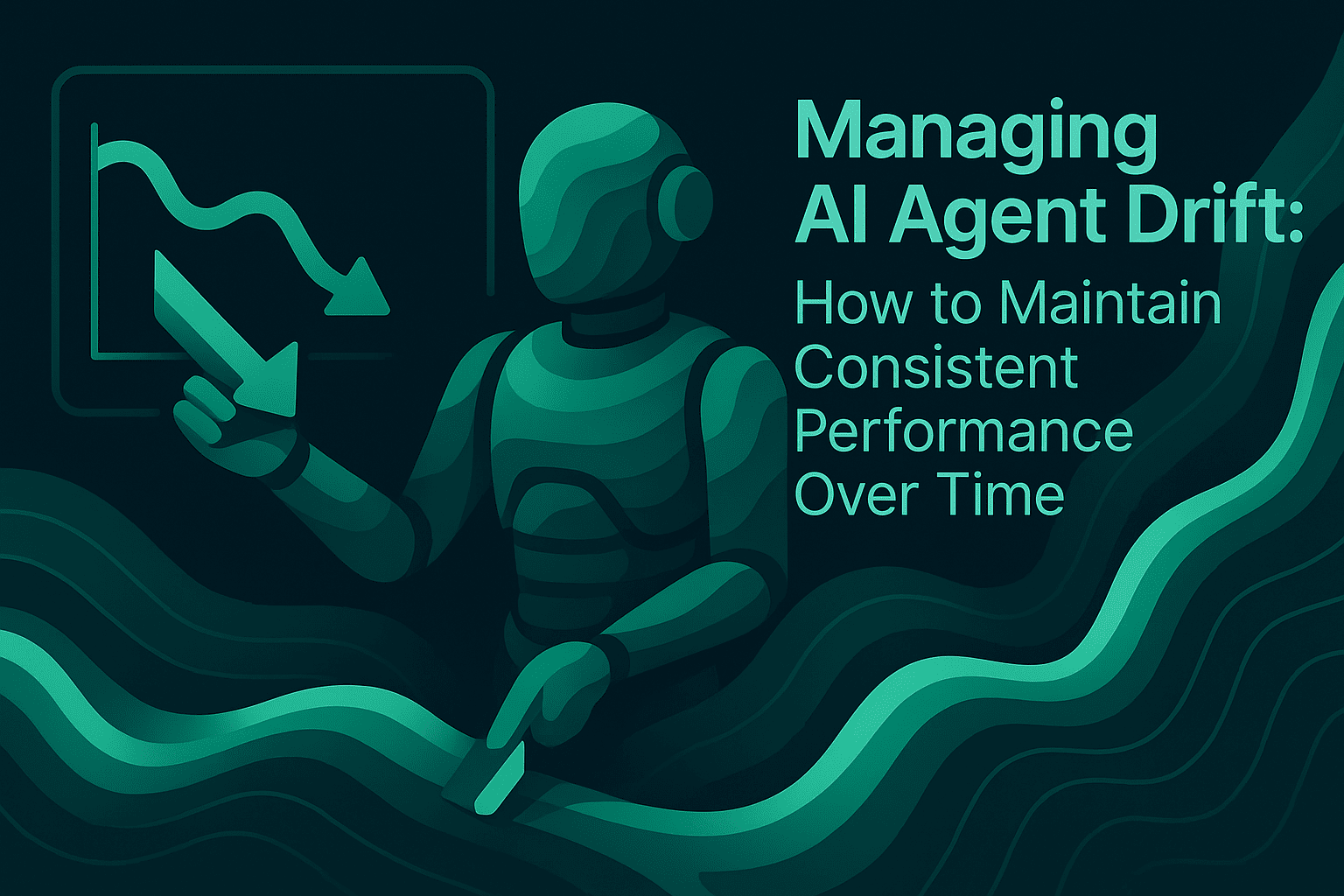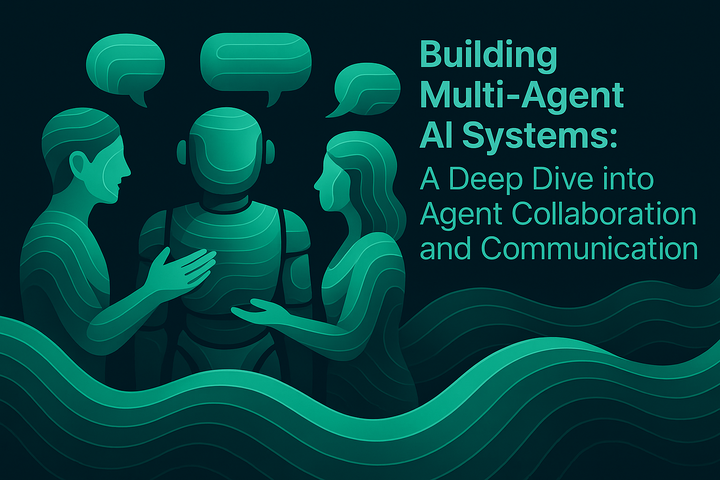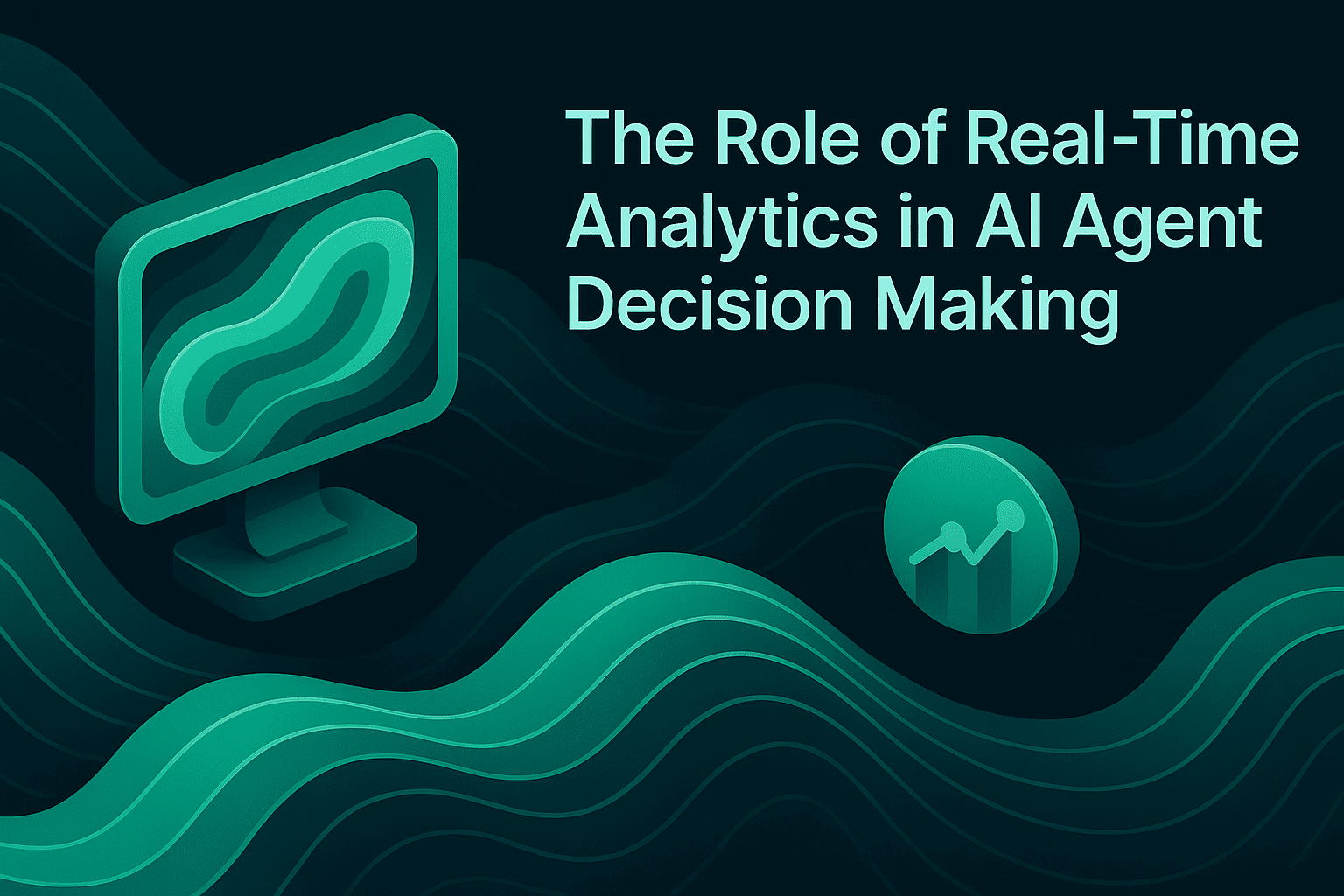Managing AI Agent Drift: How to Maintain Consistent Performance Over Time

TL;DR:
Agent drift is the gradual decline in AI agent performance caused by changing data, evolving models, prompt modifications, and shifting user patterns. This guide provides a practical framework to detect and prevent drift through session-level observability, scenario-based simulation, unified evaluations, and controlled rollouts. A disciplined loop of simulation, evaluation, observability, and controlled rollout prevents agent drift.
AI agents navigate multi-turn workflows, use tools, retrieve context, and make decisions that evolve with traffic, data, and model changes. Over weeks and months, teams observe performance regressions that never appeared in demos. This article defines agent drift, explains how it impacts reliability, and provides a practical blueprint grounded in session-level observability, scenario-based simulations, and unified evaluations to maintain consistent performance in production.
What Is Agent Drift and Why It Matters
Agent drift is any measurable decline in task success, faithfulness, latency adherence, or policy compliance over time. It typically manifests through:
Concept drift: The underlying meaning or user intent patterns change across cohorts or seasons.
Data drift: RAG sources, APIs, or CRM schemas evolve, producing different retrieval or tool outputs.
Prompt drift: Small prompt edits or parameter tweaks alter agent behavior in non-obvious ways.
Model drift: Provider model updates or version changes impact reasoning, speed, or tool-calling reliability.
For reliability-focused teams, drift is the long-term threat to consistent outcomes. A disciplined lifecycle defines metrics, simulates edge cases, monitors everything, and ships with guardrails. This approach separates demo-ready systems from production-grade agents by setting clear targets for task success, tool call error rates, and latency SLOs that operationalize what good looks like for core paths.
How Drift Shows Up in Sessions vs Nodes
Session-level observability captures the complete conversation across turns, traces, spans, and events. Node-level views inspect each tool call, retrieval, and generation step. Drift often emerges across sessions as response variance, context persistence issues, and behavior deviations, then narrows to root causes at the node level.
Maxim's session model links traces and spans to a persistent session ID with rich metadata and events, making multi-turn analysis tractable. Teams correlate tool usage, RAG retrievals, and prompts to outcomes, then filter sessions by tags, environment, or tenant to isolate regressions. This end-to-end visibility is foundational for diagnosing and fixing drift at scale.
A Starter Metric Kit to Detect Agent Drift Early
Detecting drift requires layered metrics that quantify both behavior and outcomes. A practical starter kit spans three levels: system efficiency, session-level outcomes, and node-level precision. This aligns with a unified framework for automated and human evaluations so teams can measure and act decisively.
System Efficiency
Latency consistency: Track end-to-end P50 and P95 per session and per step. Rising indicates tool bottlenecks, retrieval slowdowns, or larger prompts. Use consistent sampling windows to catch time-based regressions.
Token consumption: Monitor tokens across planning and response phases. A rising planning token trend suggests over-exploration or verbose chain-of-thought. Adjust prompts or tool invocation policies accordingly.
Tool call volume: Count calls per session and per path. Higher counts with lower success rates signal poor routing or redundant actions.
These efficiency metrics tie directly to cost and user experience and should be wired to SLOs and alerts in production dashboards.
Session-Level Outcomes
Task success: Did the agent meet the user goal under defined acceptance criteria? Use automated evaluators for clarity and completeness, and human review for high-stakes cases.
Step completion: Did the agent follow the expected plan without skipping critical steps or adding unnecessary detours? Deviations here often precede outcome drift.
Trajectory stability: Are repeated sessions with similar intents following consistent paths? Rising variance indicates prompt or policy changes that degrade predictability.
Session-level signals are the best early indicators of drift because they summarize how plans, tools, and retrievals interact over time.
Node-Level Precision
Tool selection accuracy: Did the agent choose the right tool with correct parameters for the task? Wrong selection increases retries and latency.
Tool error rate: Separate external errors (timeouts, rate limits) from parameter errors. Rising parameter errors indicate prompt or schema regressions.
Retrieval quality: Evaluate precision, recall, and relevance for RAG steps. Lower relevance across time windows indicates index or source drift.
Node-level checks localize problems and allow targeted fixes without broad prompt changes. Distributed tracing across spans makes this tractable in production.
Scenario-Based Simulation: Proving Stability Before You Ship
Traditional tests assume deterministic outputs. Agents are non-deterministic and multi-turn. Scenario-based simulation validates behavior across realistic conversations, personas, tools, and context sources. By encoding user goals, policy constraints, expected steps, and evaluators, teams uncover drift under varied conditions and prevent regressions from reaching production.
With Maxim's simulation engine, create datasets with expected actions, link RAG sources and tools, and run simulated sessions at scale. Compare versions and models side-by-side, attach automated evaluators for task success, faithfulness, and retrieval precision/recall/relevance, and add human review for high-stakes domains. This pre-release rigor is critical to catching trajectory instability and loop risks early.
How to Simulate Drift
Vary personas: Frustrated versus expert users to expose brittleness in clarifying questions and tool selection.
Stress tool environments: Timeouts, rate limits, partial data to reveal error recovery gaps and silent failures.
Perturb prompts and context: Minor edits and changing retrieval corpora to observe stability under realistic change.
Extend turn limits: Long sequences to surface state management issues and loop containment weaknesses.
Run thousands of sessions, diff prompt versions, and compare evaluator scores to quantify resilience before rollout.
RAG-Specific Drift: Retrieval Quality Must Stay Stable
In RAG pipelines, retrieval quality is a common source of drift. As corpora evolve, embeddings are re-computed, or index schemas change, precision, recall, and relevance can vary. Countermeasures include:
Retrieval evaluators that score context precision, recall, and relevance at session and span levels.
Tracing vector store queries and latency to distinguish retrieval failures from model hallucinations.
Canary indexing and shadow traffic to validate new corpora or embeddings before full rollout.
Dataset splits that isolate retrieval-heavy scenarios for targeted testing.
Monitoring RAG performance in real time and validating via scenario tests is critical to keeping grounded responses consistent.
Observability: The Stack That Catches Drift in Production
In production, full-fidelity observability captures traces, metrics, prompts, tool calls, outputs, evaluator scores, and human feedback in real time. Distributed tracing links steps to sessions, while dashboards and alerts surface anomalies as they emerge.
Maxim's OpenTelemetry-compatible SDKs instrument orchestrators and tools, emit spans with model parameters and prompt IDs, and persist raw payloads for root-cause analysis. Online evaluations score faithfulness and safety on live traffic, and human review queues adjudicate risky outputs. Real-time alerts on evaluator scores, latency, cost, and failure patterns enable proactive mitigation through comprehensive agent observability.
Evaluation: Quantifying Drift with Unified Evals
Unified evaluations (AI, statistical, programmatic, and LLM-as-a-judge) quantify improvements or regressions across versions and environments. Teams measure quality across the session and node layers: plan quality, tool selection accuracy, parameter correctness, and trajectory fidelity.
LLM-as-a-Judge can provide structured scores and rationales for answer relevance, completeness, and style at scale when configured carefully and validated against human labels. Pair online evaluators with periodic human review to align to domain expectations and catch subtle regressions.
A Practical Drift Management Playbook
1. Define Drift Signals and SLOs
Set explicit thresholds for task success, tool error rates, latency budgets, loop containment, and token trends. Version prompts and policies to maintain a clear baseline and change history.
2. Build Scenario Suites and Golden Datasets
Encode real-world workflows, attach tools and RAG sources, and add evaluators. Run large-scale simulations with personas and adverse conditions. Save failing sessions and traces as datasets for regression guards.
3. Instrument End-to-End Observability
Adopt distributed tracing with OpenTelemetry semantic conventions for LLM and agent spans. Capture non-LLM context like vector store queries and external APIs to localize retrieval-related drift.
4. Monitor Online Evals and Segment by Version
Run faithfulness, safety, and domain evaluators on sampled production traffic. Slice results by model, prompt version, tenant, and geography. Alert on deviations from rolling baselines.
5. Close the Loop with Human Review and Iteration
Route high-impact sessions to SMEs, retrain or tune evaluators, and iterate prompts and routing strategies. Treat agents as living products: collect feedback, analyze failures, and relearn continuously.
Governance and Controlled Rollouts
Prevent drift from impacting all users at once with version-aware deployments and variables for routing by environment, tenant, or cohort. Canary new versions with synthetic shadow traffic from historical contexts before migrating live traffic. Roll back automatically when evaluator scores or metrics violate thresholds. These controls reduce risk while enabling fast iteration through comprehensive observability.
Where Maxim Helps Teams Beat Drift
Maxim provides an end-to-end platform (Experimentation, Simulation, Evaluation, and Observability) so engineering and product teams can detect and fix drift across the full lifecycle:
**Experimentation:** Version prompts, compare output quality, latency, and cost across models and parameters.
**Simulation & Evaluation:** Run persona-driven scenarios, attach evaluators at session and span levels, and reproduce failures from any step.
**Observability:** Instrument distributed tracing, run online evaluations on production traffic, and alert on regressions in real time.
**Documentation:** Implementation details, SDKs, and best practices to operationalize tracing and evals.
For teams evaluating platforms, compare Maxim with alternatives like Arize, Phoenix, LangFuse, and LangSmith.
Conclusion
Agent drift is inevitable in dynamic environments, but it is manageable with the right discipline and tooling. Define session and node-level signals, simulate aggressively before shipping, instrument comprehensive observability in production, and enforce unified evaluations with human oversight. Treat agents as living systems with version-aware governance and continuous improvement. With this playbook in place, teams maintain consistent performance over time and build user trust.
Request a live demo or sign up to explore how Maxim's full-stack platform helps your team operationalize drift management at scale.


